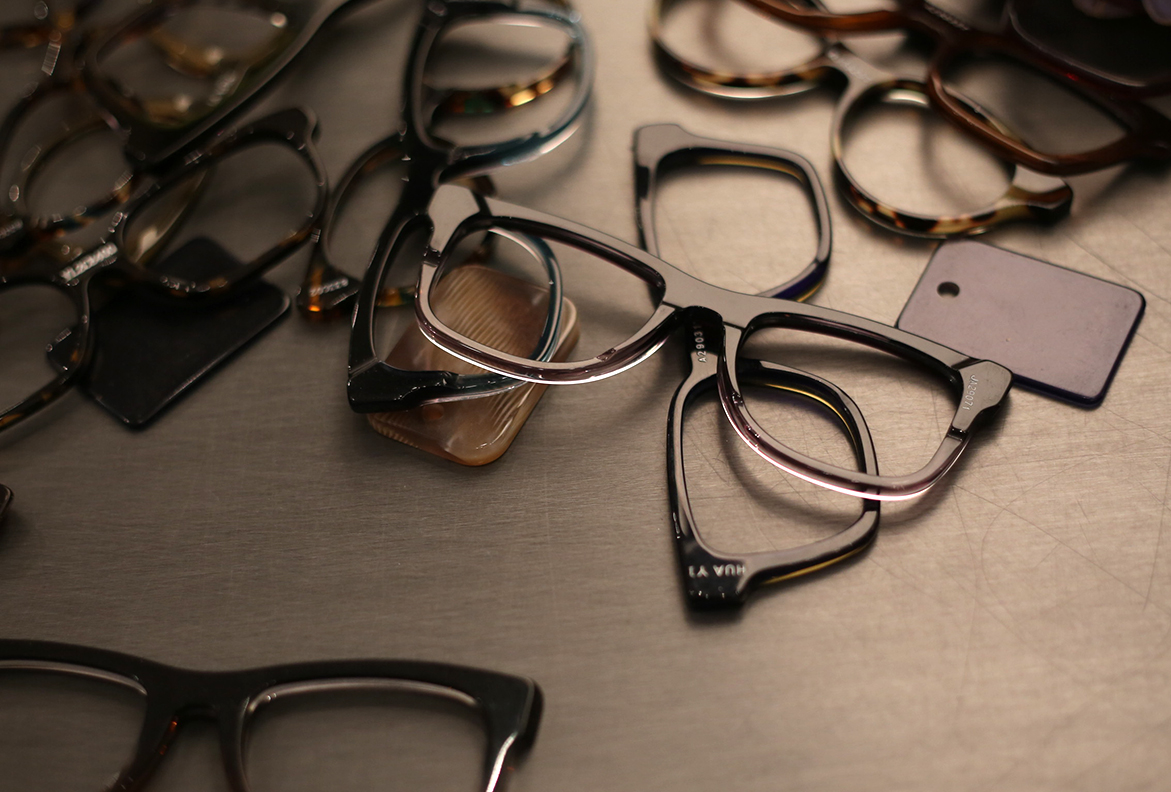When it comes to eyewear, acetate frames have become increasingly popular for their stylish appearance and lightweight comfort. But have you ever wondered how these fashionable frames are actually made? In this blog post, we'll take you through the step-by-step process of manufacturing acetate frames, shedding light on the intricate craftsmanship behind your favorite pair of eyeglasses or sunglasses.

The journey of creating acetate frames starts with material selection. Acetate, a plant-based plastic derived from wood pulp and cotton fibers, is chosen for its durability, flexibility, and vibrant color possibilities. The selection of high-quality acetate is crucial to ensure the final product's longevity and visual appeal.
Once the acetate material is selected, it's time to prepare the sheets that will be used to make the frames. The acetate sheets are carefully measured and cut into specific sizes, taking into consideration the frame style and design. These sheets will serve as the canvas for crafting the frames.
Using precision tools, skilled artisans cut the acetate sheets into individual pieces that will form the various parts of the frame – the fronts, temples, and bridge. The pieces are then shaped according to the desired design, taking care to achieve uniformity and symmetry.
This is a critical step in the manufacturing process. The shaped acetate pieces are placed into specialized molds and subjected to heat. The heat softens the acetate, allowing it to be molded into the desired shape. This step requires careful attention to temperature and timing to ensure the frames maintain their integrity and structural strength.
After the acetate pieces are molded, they are meticulously assembled to create the final frame. This involves attaching the temples to the fronts, adding hinges, and fitting any other necessary components. The frames are held together securely to guarantee durability and longevity.
Once the frames are assembled, they undergo a thorough polishing and finishing process. This step enhances the frames' appearance by smoothing out any rough edges, eliminating imperfections, and achieving a glossy finish. The frames are carefully inspected to ensure they meet the brand's quality standards.
Before the frames make their way to your favorite eyewear boutique, they undergo rigorous quality control checks. Experts examine each frame for any defects, ensuring that they meet not only the brand's standards but also international quality regulations for eyewear.
With the frames passing quality control, they are now ready for packaging and distribution. Careful packaging ensures that your acetate frames reach you in pristine condition. From there, they are shipped to retailers or directly to customers, ready to be worn and cherished.
In conclusion, the journey from raw acetate material to a stylish pair of frames involves a meticulous and intricate manufacturing process. Each step requires a combination of skilled craftsmanship and modern technology to create frames that are not only fashionable but also durable and comfortable. The next time you put on a pair of acetate frames, you'll have a deeper appreciation for the craftsmanship that went into making them.
If you're looking for high-quality acetate frames that are a perfect blend of style and craftsmanship, be sure to explore our collection at RIKE Automation. We take pride in offering eyewear that showcases the artistry of acetate frame manufacturing.